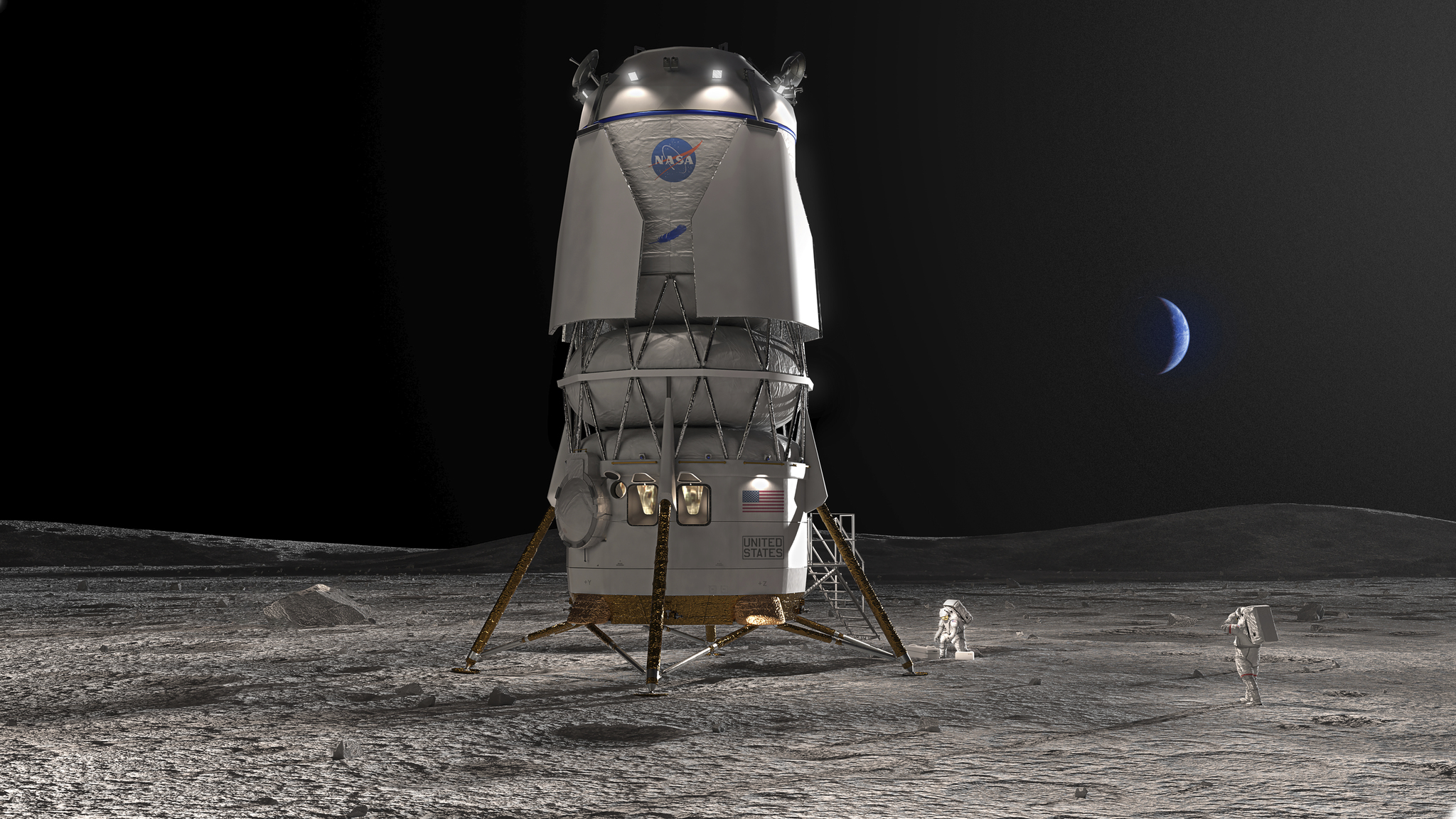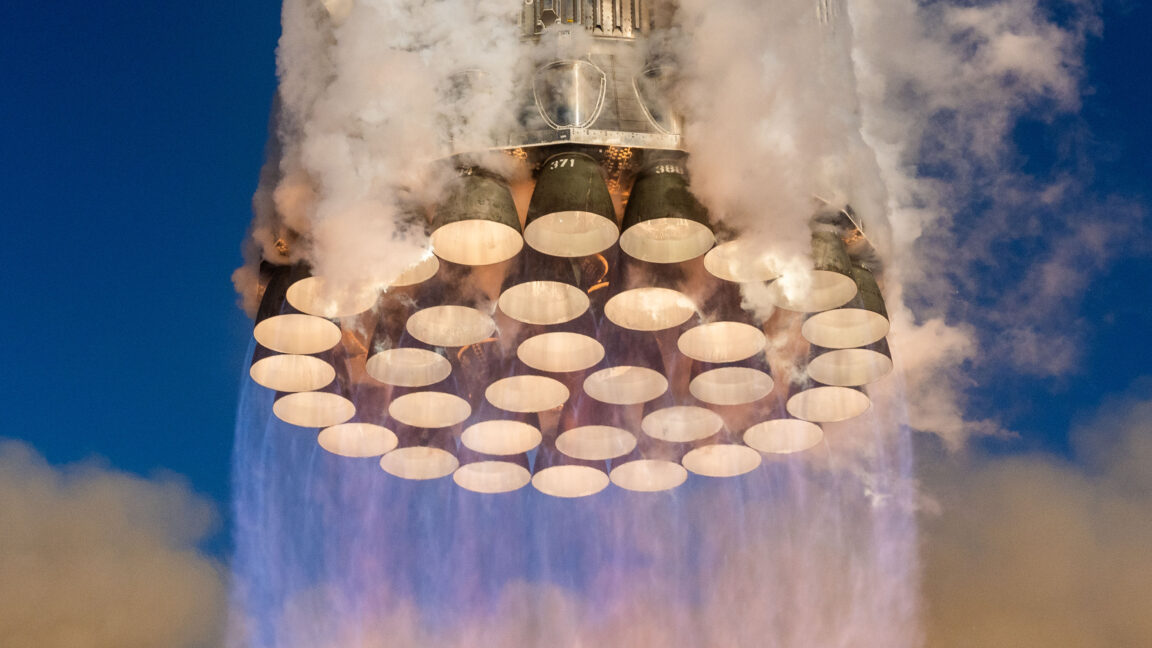NASA on Friday announced its selection of Blue Origin to build a second Human Landing System for its Artemis program to return to the Moon. The space company, founded by Jeff Bezos, will lead the development of a fully reusable lander that could take flight as soon as the end of this decade.
The fixed price contract is worth $3.4 billion, and NASA would like the "Blue Moon" lander to be ready for its Artemis V mission. Nominally, this landing of four astronauts will take place in 2029, but almost certainly, the schedule will slip out into the early 2030s. Blue Origin beat out another bidder, a team led by Dynetics, for the award.
Friday's announcement represents a significant moment for NASA for multiple reasons. Importantly, it adds a second provider of human landing services. Previously, NASA awarded a contract to SpaceX for its Starship vehicle to serve as a lunar lander. That vehicle will be used for NASA's first two lunar landing missions, Artemis III and Artemis IV. So NASA gets the competition it covets, which has been shown to spur commercial development.
Perhaps more importantly, NASA is stepping into the future with this lander design. By selecting the revised Blue Moon concept, there are now two US companies developing an in-space propellant depot capability and fully reusable vehicles to put humans on another world.
“It’s an incredible moment in spaceflight history," NASA Administrator Bill Nelson said on Friday during a news conference.
He's right. We don't know if SpaceX or Blue Origin will ultimately succeed with these programs, but both are developing spaceships that are radically different from the ultra-expensive, expendable means that humans used to reach the Moon more than five decades ago. It's a big change.
The lander design
So how will Blue Origin do it? The company's Human Landing System program manager, John Couluris, shared some key details about the Blue Moon lander on Friday.
It will stand 16 meters tall and have a dry mass of 16 metric tons. Fully fueled with liquid hydrogen and liquid oxygen propellants, its mass will be more than 45 metric tons. The lander is designed to fit within the fairing of the company's New Glenn rocket, which will deliver the unfueled vehicle to lunar orbit.
There is a separate component, a refueling vehicle, that will be loaded with propellant in low-Earth orbit. After traveling to the Moon, this tug will transfer propellant to the Blue Moon lander.
The lander consists of high-gain antennas at the top for communications back to Earth, and the large tank at the top of the vehicle is for liquid hydrogen. The panels at its side are thermal radiators. The smaller tank below that is for liquid oxygen. Then finally, there is the crew module at the bottom, which will support four astronauts for up to 30 days on the Moon. A docking adaptor is shown to the left of the two windows.
Blue Origin has already made progress in developing the BE-7 rocket engine that will power the vehicle and is developing the rest of the spacecraft with a "National Team" that includes Lockheed Martin, Draper, Boeing, Astrobotic, and Honeybee Robotics.
The entire lander, as well as the propellant tug vehicle, are designed for full reusability. Blue Origin plans to fly a demonstration of the "Mark 2" version of the Blue Moon lander down to the Moon and back up to lunar orbit before the crewed Artemis V mission.
A big day for Blue
Blue Origin, and its founder, were bitterly disappointed in the wake of the loss of the first lander contract to Starship in April 2021. Bezos protested the contract award and then followed up with a lawsuit. Ultimately, NASA and the courts told Bezos that SpaceX bid a better plan at an affordable price.
So Blue Origin returned to the drawing board and came back with a better plan. This version of Blue Moon is fully reusable, like SpaceX's Starship. Moreover, Bezos is committing substantial funding. According to Couluris, Blue Origin's investment will be "well north" of the $3.4 billion NASA itself is paying for the contract.
This represents another win for NASA. The space agency is leveraging the burgeoning commercial interest in the Moon—as well as the spaceflight dreams of billionaires Elon Musk and Jeff Bezos—to open the door to a potentially affordable and revolutionary new deep space exploration program. If all this works, NASA and its international partners are getting a spectacular deal. The combined development costs of Starship and Blue Moon will likely approach $20 billion. NASA is paying about one-third of that cost.
NASA also gets to lean in to future technologies. While Blue Moon looks a little more conventional than SpaceX's massive Starship vehicle, it nonetheless will require an immense amount of technological development.
For example, liquid hydrogen propellant must be kept at near-absolute zero temperatures to prevent it from boiling off. This is difficult enough on Earth, but still more so in space where there are incredibly variable thermal conditions in and out of sunlight. Typically, rockets that use liquid hydrogen fuel in their upper stages must complete all their planned firings within a day or less before this fuel boils off.
Couluris said Blue Origin has been working to make hydrogen a "storable" propellant for long periods. "If you can make hydrogen storable, then you can do a number of things," he said. "It opens up the rest of the Solar System."
That's the long-term goal. Now that it has a NASA contract in hand, the really hard work begins for Blue Origin.


